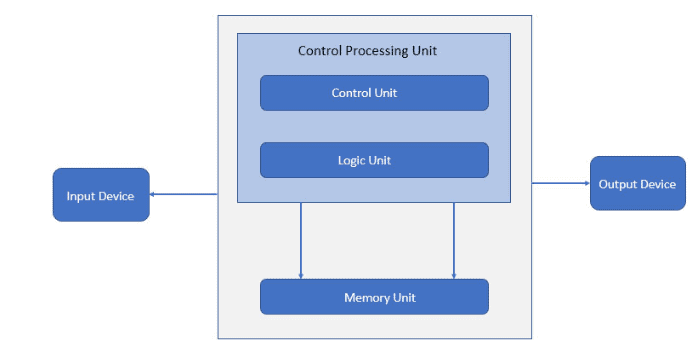Introduction to Computer Organization and Architecture
Introduction
Computers have become part of everyone’s life. Everyone now uses computers daily for watching videos, making documents, storing data, etc. The study of how computers are implemented and function within is known as Computer Organisation and Architecture(COA). The organization of a computer system is the means through which the architecture is put into practice and realized.
What is meant by Computer Organization and Architecture?
Computer organization and architecture provide a methodical approach to issue-solving.
Designing is an attribute of architecture and utilization is an attribute of organization.
- Computer Architecture:
- Computer architecture explains the attributes visible to the programmer such as the instruction set, number of bits handled by the processor, data representation, I/O mechanism, and addressing techniques.
- It deals with the functional behavior of the components and design implementation of various parts of the computer.
- Computer Organization:
- Computer Organization explains how features are implemented in control systems such as control signals, interfaces, and memory technology.
- It deals with the structural relationship.
Computer Organization vs Architecture
| Computer Organization | Computer Architecture |
| The Computer Organization addresses a structural relationship. | The functional behavior of computer systems is addressed by computer architecture. |
| The organization indicates its performance. | Architecture denotes the hardware. |
| The architecture of a computer influences the choice of an organization for its design. | Before designing a computer, its architecture must be determined. |
| It is also known as microarchitecture. | It’s also known as the instruction set architecture. |
| It includes physical units such as circuits as design, adders, signals, and peripherals. | It is made up of logical components such as the Instruction Set and Addressing Modes. |

Computer systems consist of various functional units, which are:
- Processor
- Memory
- I/O devices.
- System Interconnections
- Processor/CPU:
A processor is the logic circuitry that responds to and processes the fundamental commands that power a computer (CPU). The CPU is considered the primary and most important integrated circuits (IC) chip in a computer because it interprets the majority of computer commands. CPUs perform the majority of fundamental operations in logic, I/O, and arithmetic, as well as distributing commands to other processors and parts of the computer.
Basic elements of CPU:
1. Control unit: This unit regulates the operation of the CPU and thus the computer.
2. Arithmetic and logic unit (ALU): Performs data processing functions on the computer.
- Performs mathematical operations like addition, subtraction, etc.
3. Registers: Provides storage internal to the CPU.
4. CPU interconnection: A mechanism that allows communication between the control unit, ALU, and registers.
CPU operations:
- Fetch- The operation of fetching instructions from a system’s RAM from program memory.
- Decode- the process of converting an instruction to determine which other parts of the CPU are required to complete the operation. The instruction decoder handles this.
- Execute- is where the operation is carried out. To carry out the instructions, each part of the CPU that is required is activated.
- Memory: Stores all the instructions of the program.
- Instructions are stored in the memory provided with addresses.
- The address of the memory location is used to locate the instructions in a much easier way.
- I/O Devices: Used to give inputs to the system and produce the output.
- Inputs are given through input devices like a keyboard and mouse.
- Output is obtained by output devices like screens and printers.
- System Interconnections: All the functional units can intercommunicate by using the system bus.
The article explains a very clear introduction to computer organization and architecture. You can continue your further reading in the follow-up blogs.
